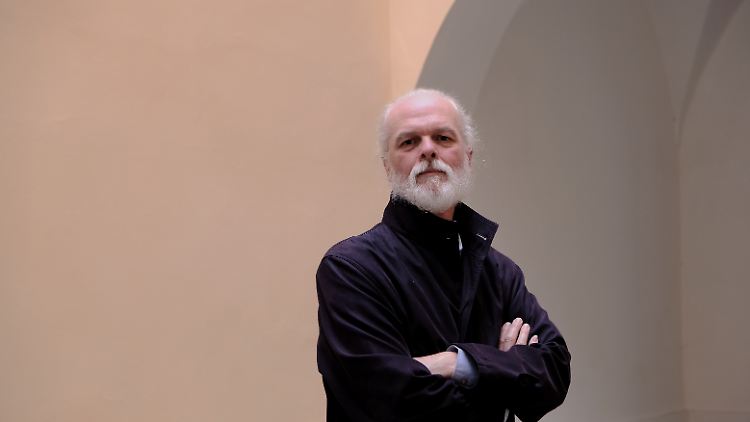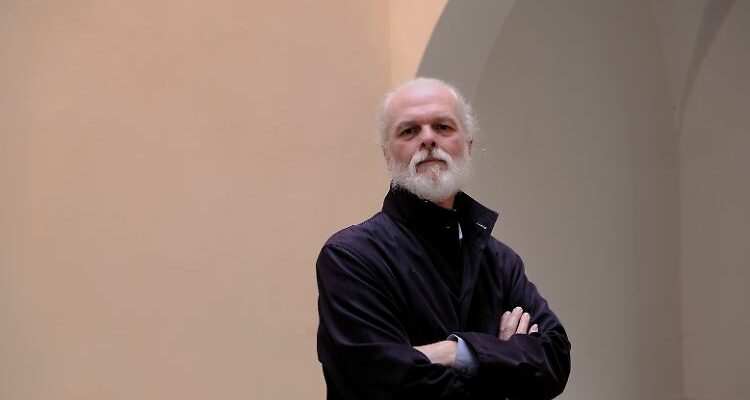At the World Climate Conference, 22 countries declared that they wanted to triple their nuclear capacities by 2050. These include many friendly and experienced nuclear power nations: the USA, France, Finland, Great Britain, Japan, Canada, the Netherlands, Poland, Sweden, South Korea and Ukraine. But Mycle Schneider shakes his head. “It doesn’t work,” says the editor of the World Nuclear Report (WNISR) in ntv’s “climate laboratory”. Because that would be well over 1,000 new nuclear power plants in 27 years. But the nuclear industry is in a desolate state: “These companies are already stretched to the limit with their existing reactor fleets,” says Schneider, who points to bankruptcies and mountains of debt of up to $149 billion among Americans, French and South Koreans. Chinese power plant builders are not an alternative because they are on a US blacklist. That leaves only Russia… “I don’t have to explain too much why that’s problematic,” says Schneider.
ntv.de: At the World Climate Conference, 22 countries announced that they wanted to triple their nuclear capacities by 2050. Is this plan feasible?

Mycle Schneider is coordinator and editor of the WNISR. For his work he was awarded the “Right Livelyhood Award” in 1997, better known as the Alternative Nobel Prize.
(Photo: Nina Schneider)
Mycle Schneider: First of all, it is not a mandatory goal, but a goal Pledge: 22 countries promise that global Triple capacity. The World Nuclear Industry Status Report (WNISR) has the characteristic of conducting empirical analysis. We’re not part of the crystal ball faction that makes predictions, but if you look at the data from the last 20 years and think: What needs to happen to achieve this goal? The answer is very simple: it doesn’t work. This is not a question of good or bad or a little bit more or a little less. This promise cannot be implemented.
Why?
This announcement completely forgets that a few reactors will be taken offline by 2050. Even in countries like the USA, where the terms of almost the entire fleet have been extended to 60 and in some cases even 80 years. That’s not realistic anyway, because no nuclear power plant has run for 60 years. The average retirement age is around 43 years. But even if everyone runs until the last day, 270 nuclear power plants would have to be built just to maintain the current level. If we want to triple capacity, we are talking about well over 1,000 new reactors.
The youngest was on December 6th World Nuclear Industry Status Report (WNISR) presented. On more than 500 pages, a team of researchers from Great Britain, Germany, France, Japan, Canada and the USA compiles the state of the nuclear industry: How many reactors will be shut down in 2023? How many nuclear power plants have been brought online? On how many days did the individual reactors run? How old are the kilns on average? How much longer should they run? There are also separate chapters on selected countries such as China, Germany, France, Russia and the USA and, this year, a special chapter on the question of how economical nuclear power plants are.
You would have to build 270 nuclear power plants in 27 years just to maintain the current level?
Yes. You don’t have to be a mathematician, that’s ten a year. In the past 20 years – from 2003 to mid-2023 – a total of 103 nuclear power plants went into operation, while 110 were shut down at the same time, a slightly negative result. Of these 103 operational start-ups, 50 are in China; outside of this, there remains a negative balance of 57 nuclear power plants. In the future, the construction rate would have to be doubled from around five nuclear power plants per year to ten per year just to maintain the current level. The average construction time over the past ten years has been just under ten years, and that officially only begins with the cementing of the foundation of the reactor building. Years of preparation are missing from the information!
Is that also a question of space? These nuclear power plants have to be somewhere.
No, an industrial one. The politicians who made this promise at COP28 are not going home and building nuclear power plants. It takes an industry to do this, but you can count on one hand the companies capable of building nuclear power plants. In the USA, Westinghouse had to file for bankruptcy in 2017 after very bad experiences with the construction of two nuclear power plants: The VC Summer project was abandoned. At the Vogtle nuclear power plant, construction times have doubled and costs have exploded. A reactor is still under construction.
The French counterpart Framatome looks similar. The parent EDF has accumulated 65 billion euros in net debt. Who is left? The Koreans, but their national company KEPCO, has a whopping $149 billion in debt. I didn’t know that you could survive with such a mountain of debt… Those are not the conditions for building nuclear power plants on a large scale.
All nuclear companies are heavily in debt and, like EDF, had to be taken over and saved by the state?
Things look a little different at Westinghouse. That belongs to you now Uranium company and a holding company in Canada that has never built a nuclear power plant. That leaves China and Russia. However, the two large Chinese companies were blacklisted by the US government. It is practically impossible for companies from the Western world to cooperate with them. And Russia? I don’t have to explain too much why this is problematic.
Some nuclear power plants are already planned in Europe, for example in Poland. Who should build this?
There is an agreement between the USA and Poland that says the first nuclear power plant should go into operation in 2033 and Westinghouse first contender is for construction. But that’s not possible, regardless of whether you like the project or not. It is not industrially feasible.
Because these companies lack the employees to do this?
That’s the way it is. These companies are already working to the limit with their existing reactor fleets. Look at the example of EDF: the performance of the French power plant fleet was an absolute disaster last year. There were an average of 152 downtime days per reactor, meaning the plants were idle for almost half of the year. Five nuclear power plants produced no electricity at all. Zero kilowatt hours. Repairs, repairs, modernizations and other problems are so demanding on the workforce in France that welders had to be flown in from the USA and Canada and spare parts manufactured in Italy.
Or take Sweden: The Swedish government has passed a law allowing nuclear power plants to be built again. The public perception is that Sweden has nuclear power plants builds. But there is no industry for it in Sweden; the last nuclear power plant there was put into operation in 1985!
Aside from the three German reactors: How many nuclear power plants were taken offline this year?
Five in total. Four nuclear power plants went online in 2023.
In China?
Not only, also in Europe: Slovakia has put a nuclear power plant into operation, construction of which began in 1985.
You can find the climate laboratory on ntv and wherever there are podcasts: RTL+, Amazon Music, Apple Podcasts, SpotifyRSS feed
You have questions for us? Write an email to [email protected] or contact Clara Pfeffer and Christian Herrmann.
That’s almost 40 years of construction…
The work was temporarily interrupted, but you get an idea of the lead times. In the USA, the Vogtle 3 nuclear power plant also went into operation after ten years of construction. This was originally supposed to be finished after 36 months because they wanted to use a very modern, modular construction method. That’s the reality.
What is going wrong that three years turn into ten or that construction drags on for almost 40 years like in Slovakia?
There are several outstanding issues. One thing is that nations used to take care of large-scale projects such as nuclear power plants themselves, but today a globalized industry does this. The first European pressurized water reactor went online in Finland last year. There were over 50 nationalities on the construction site. At the French counterpart in Flamanville, there were situations where the regulator had to intervene because team leaders could not communicate with the people they were responsible for. That sounds banal, but it’s not that easy when the Portuguese concrete worker discusses with his Polish colleague what technical specifications are actually used to pour concrete for nuclear power plants.
Federal Finance Minister Christian Lindner cites the additional problem that insurers can no longer be found for nuclear power plants.
The Fukushima disaster, which is still not over, is estimated to cost between $250 billion and $700 billion, depending on how certain types of waste are treated, whether tritium is extracted from contaminated water, and other issues. Nobody knows the exact amount, but everyone knows: we’re talking hundreds of billions of dollars. This won’t shock an insurance company, they are already willing to insure a nuclear power plant, but the insurance costs would be so high that they would no longer be able to sell the kilowatt hour of electricity. The USA has therefore set up a national insurance fund, which currently contains $13 billion. This means that not even a fraction of the damage could be paid for. So if something happens, it’s definitely the taxpayer’s fault. This also happened in Japan: TEPCO, the operator of Fukushima, is technically bankrupt and has been subsidized by the Japanese government since March 11, 2011.
Is this a cost factor that needs to be taken into account from the outset?
Exactly. The issue of insurance is nothing more than a form of hidden subsidies. It is pretended that this cost factor is taken into account in the kilowatt hour, but in fact we know that it is not. All cost estimates already show that nuclear power has become the most expensive form of electricity generation. For new nuclear power plants you end up with 18 cents per kilowatt hour, which is three to four times what wind and solar cost. We can see the result of this: in 2022, almost 500 billion euros flowed into renewable energies worldwide, around 14 times what was invested in nuclear power plants. This even applies to China, the country that has really invested in nuclear power over the past 20 years: China brought around two gigawatts of nuclear power online in 2022, but also 125 gigawatts of solar and wind.
Spoke to Mycle Schneider Christian Herrmann. The conversation has been shortened and smoothed for better clarity.
What helps against climate change? “Climate Laboratory” is the podcast in which ntv puts ideas, solutions and claims through their paces. Is Germany an electricity beggar? No. Is the heat pump too expensive? Absolutely not. Is energy renovation worth it? Absolutely. CO2 prices for consumers? Inevitable. Climate killer cow? Misleading. Reforestation in the south? Exacerbates problems.
The ntv climate laboratory: half an hour every Thursday that informs, has fun and cleans up. At ntv and everywhere there are podcasts: RTL+, Amazon Music, Apple Podcasts, SpotifyRSS feed
You have questions for us? Write an email to [email protected] or contact Clara Pfeffer and Christian Herrmann.
